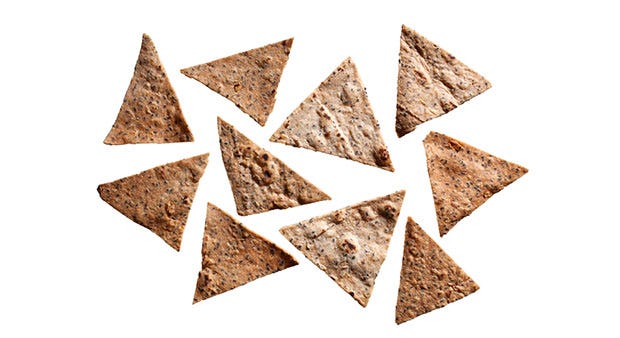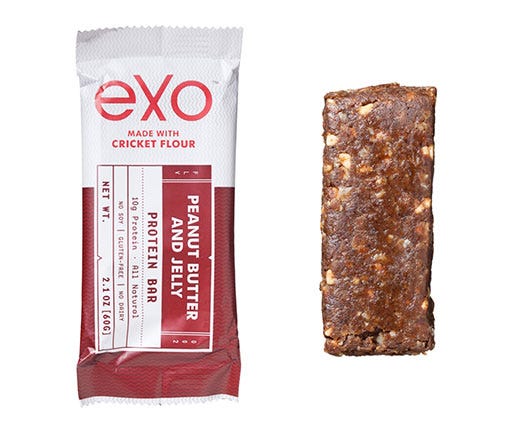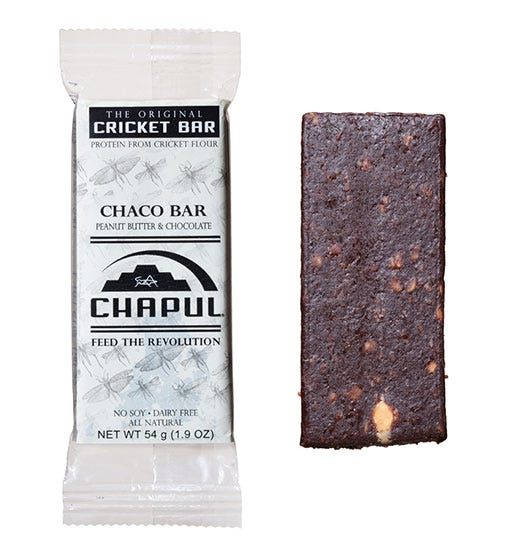Everything you ever wanted to know about the growing trend of cricket flour in food.
Bugs are trending…all over my office. I’m buried in samples of foods made from crickets: cricket cookies, tortilla chips, protein bars, even all-purpose flour that apparently has nutty undertones and works well in banana bread. I’m intrigued and slightly weirded out, but most of all I’m wondering: Are bugs in food just a fleeting fad for the Western world, a nostalgic nod to more primeval populations who have been eating insects for centuries? Or does it have the potential to become part of the American palate, akin to sushi in the 1970s? I decide to investigate.
 STUART TYSON
STUART TYSON
How did insects end up in our food?
While eating bugs is common in Asia, Africa, and Latin America, it wasn’t until last May that the Western world—and, naturally, a bunch of start-ups—began taking edible insects seriously. That’s when the UN’s Food and Agriculture Organization released a report stating that by 2050, the world will need to feed 2 billion extra people, given the jump in population growth. One of its solutions: Eat more protein-rich bugs, which, if they become part of the mainstream global diet, could greatly affect the environment. Crickets emit 100 times fewer greenhouse gases than cattle, and raising a pound of crickets requires 1 gallon of water and 2 pounds of feed, while raising a pound of beef requires 2,000 gallons of water and 25 pounds of feed.
Cheap food is cool. But, uh, how do we make insects part of the mainstream in the US, where we’d much rather spray them with poison than sauté them in a pan? That’s where creative start-ups come in. Earlier this year, a woman named Megan Miller cofounded Bitty Foods in San Francisco, selling grain-free, cricket-flour-based cookies in flavors like orange-ginger and chocolate-cardamom. She says the cookies are a “gateway product,” meaning their sugary form can help disguise the fact that you’re eating bugs (and the gateway is apparently working, as I’m now on my third cookie since starting to write this article). “The key is turning crickets into something familiar,” Miller says. “So we slow roast them and mill them into a powder that can be incorporated into basically anything.”
Familiarity seems to be the key word. Suzy Badaracco, president of Culinary Tides, a company that forecasts foods trends, predicts that the edible-bug business will certainly grow, but most likely for insect-flour-based products like protein bars, chips, cookies, and cereals—that is, foods in which you can’t see actual bug parts. The time is right, Badaracco adds, because American consumers have a growing interest in sustainability and nutrition, especially when it comes to high-protein foods. And she seems to be right. Shortly after I chatted with Badaracco, JetBlue announced that it would begin offering Exo cricket-flour protein bars to passengers on JFK-to-LAX flights starting in 2015. Whole-insect consumption, on the other hand, has no historical ties to the US, so it has a lot to overcome before penetrating deeper into the retail and restaurant scenes.
We could only find cricket bars in hipster-riddled markets and Whole Foods. Will that change? Bitty Foods sales are through the roof—they tripled in a recent 3-week span following some good press. What’s more, celebrity chef Tyler Florence joined as culinary director of the company to help develop “a range of products that will go straight into national distribution within a year,” says Miller. She couldn’t comment on specific products but says there’s potential for things like breads and pastas. “Stuff that’s normally just a carb bomb can be turned into something really nutritious,” she notes. And for you number-crunching health nuts, bugs really are good for you: Dried crickets have 60 to 70% protein—cup for cup, that’s comparable to beef—and contain omega-3 fatty acids, B vitamins, iron, and calcium.
 STUART TYSON
STUART TYSON
 STUART TYSON
STUART TYSON
All this potential growth begs the question: Where the heck will all these bugs come from? Right now there aren’t enough suppliers to meet demand—only about five farms producing food-grade insects exist in North America, which means bug-based foods will remain pricey. For context, a bag of Bitty Foods’ baking flour goes for $20. But interest in bug farming is growing, and, thanks to agricultural technology companies like Tiny Farms, people now have the support to start. “I literally get e-mails every day from people who want to start farming,” says Tiny Farms’ CEO, Daniel Imrie-Situnayake, whose company is creating a model for what a modern, highly efficient insect farm looks like. The goal: Develop a network of these farms, buy their insects, ensure their quality, and sell them to manufacturers. “With the systems we’re designing, production will rise and prices will drop,” he says. “So if you want to replace some of your expensive beef or chicken with insects, that’s going to become very cost-effective within the next few years.”
Oh, and it’s not just us who could be eating more insects—we may one day find ourselves shopping for bug-fed beef, too. What does that mean? FAO’s Paul Vantomme sees some of the biggest potential for insects in the animal-feed sector. “The main sources of protein for animal feed are currently soy and fish meal, so we’re essentially feeding livestock things humans could eat, which isn’t very efficient,” he says. “With insects, we can feed them organic waste that’s not competing with human demands.” Not to mention, farming insects requires very little space and water, compared with something like soybeans. But, Vantomme cautions, it will likely be a few years before there’s enough production to make insect meal cost-competitive with current animal-feed sources, as well as the development of the required regulations for the use of insects in our feed chains.
So, whichever way we spin it, it looks like bugs will eventually enter the food supply. Could eating a chocolate-chip cricket cookie save the planet? No, but down the road, the cumulative effect of a large number of people eating small quantities of insect-based foods just might ensure there’s more meat and resources to go around for the burgeoning global population—and help you hit your protein quota in the process.